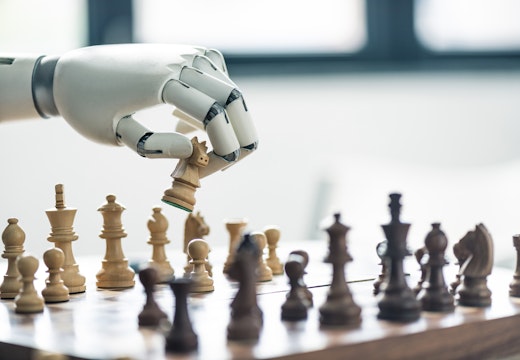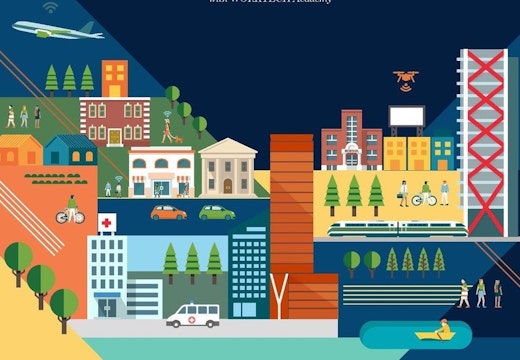Arriving now: seven big tech ideas to reshape the workplace
Seven big ideas in technology are set to reimagine the workplace in terms of experiences, services and the way people will work, explains Philip Ross
What are the big tech drivers of change in the global workplace? There is much talk about the rise of the robots and the threat to traditional employment. As Bank of England Governor Mark Carney told The Times, ‘Longer lives and rapid advances in technology could mean that some workers never have the option of retiring. We are clearly on the verge of a Fourth Industrial Revolution that would be dominated by artificial intelligence, automation, biotechnology and 3D printing.’
Constant change is therefore the new reality. But some ideas for tomorrow are closer than we think. Here are seven trends to watch out for:
1. Physical Social Network
The raison d’etre of the ‘place of work’ is set to be more and more around interaction and less about solo work; buildings will become physical incarnations of online social networks. The experience of Gen Z today and their digital lifestyle informs much of what is to come. Their approach to real-time interaction through platforms such as Snapchat, WeChat and Fortnite demonstrate an expectation of being connected, always on, interacting synchronously and transparently with their friends. A gamified workplace will be one consequence of the ‘Xbox generation’ in stark contrast to the staccato exchange of asynchronous communications adopted by the Baby Boomers and Gen X, whose way of working is largely off-line in scripted workplaces, with days full of back-to-back meetings
2. A Digital Workplace
The addiction of Gen Z to digital platforms will lead to an expectation for, and a realisation of, a digital workplace. This will have a range of attributes that will redefine how and where work is done. Today there is an ability for the user to choose but decisions and information are imperfect. And data scarcity leads to unintended consequences from ill-informed decisions – we are not optimising our work-life integration. With AI, machine learning and the use of data analytics to define an optimal working day, we will move from self-service to suggestion. Real-estate data scientists will analyse past performance, look at current activities, review the ‘data lake’ and recommend where to work, in what space and with which people.
3. Real Time Real Estate
Suddenly buildings can become smart. Rather than the dumb containers of old, the rise of the internet of things will result in billions of sensors that will measure everything from air quality to occupancy and an intelligent infrastructure that will manage all aspects of the built environment. These systems will generate huge amounts of information, and this data will allow smart decisions. This vision of real time real estate cutting costs (energy, food waste, underutilised space) and improving experience (service, support) along with machine learning and AI (predictive analytics and sociometrics) will transform the world of work.
4. An App Centric Workplace
We all use apps in our personal lives, but when we step into the workplace there is a lack of experience and utility. Much is about to change. We predict that many of the functions people need to be effective during their working day will be provisioned through an app. From accessing the building to finding the way to your meeting room, booking a desk or requesting a locker, ordering food and coffee or checking into a conference room, the app will be the dominant user interface. New workplace apps that are ‘location aware’ will change the user experience and provide enhanced productivity by aligning space with preference and activity.
5. A Consumerised Workplace
The vision of apps on smart devices signifies the use of smartphones as a central tool. But people, and especially Gen Z, expect to use those devices for more than just corporate functionality. The blurring of boundaries between corporate apps and personal social media requires new approaches to ‘work-life integration’. Progressive companies have resolved issues of security and compliance to allow people to ‘bring their own device’ (BYOD) to work and use it to access corporate systems. BYOD will blur the demarcations and complicate the once autocratic approach to corporate technology. Choice and preference will bring predictable and ‘safe’ corporate IT solutions into tension with a ‘consumer-friendly’ approach where people expect the same experience that they have with home technology.
6. The End of the Cable
It seemed so implausible 25 years ago when I published The Cordless Office report. Back in 1994, people had never heard of wireless technology, or if they had, they were worried about speed, reliability and security. Now the cable is dead. People are used to wireless technology – indeed they rely on it; the iPad has no Ethernet port, a smart phone will synchronise with the cloud over Wifi and, soon, 5G wireless networks will provide blistering speed to the palm of your hand. The fears over performance and security are now largely gone and people have embraced the flexibility and mobility that wireless technology brings. Connecting people and not places or desks, using ever more portable devices and ‘unconscious synchronicity’ will become the new normal.
7. Voice Revolution
We are at the beginning of a voice revolution. The use of speech to interact with technology is about to come of age. We have seen the growth of digital assistants like Apple’s Siri and Microsoft’s Cortana. Now the concept of the voice user interface or VUI will provide a new way of interacting with systems, platforms and devices. Natural language will increasingly be used to interact with digital assistants, requesting information, directing requests or searching for knowledge. Amazon’s Alexa for Work is leading the way. As conversational computing arrives in the workplace, watch out for a backlash against open plan as noise and distraction drive people back into acoustically optimised spaces.
Overlay voice with the rise of biometrics and cameras that capture intelligence through analytics of people’s faces, their demeanour, their movement and behaviour – and we have a ‘perfect storm’ of new data to direct workplace experience. The ideas for tomorrow just got a lot closer.








